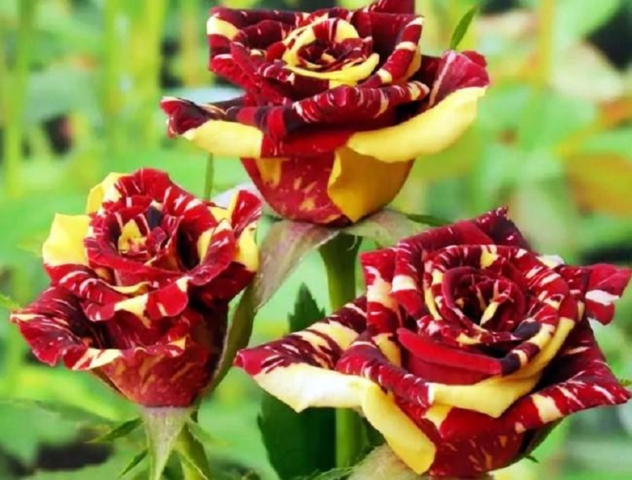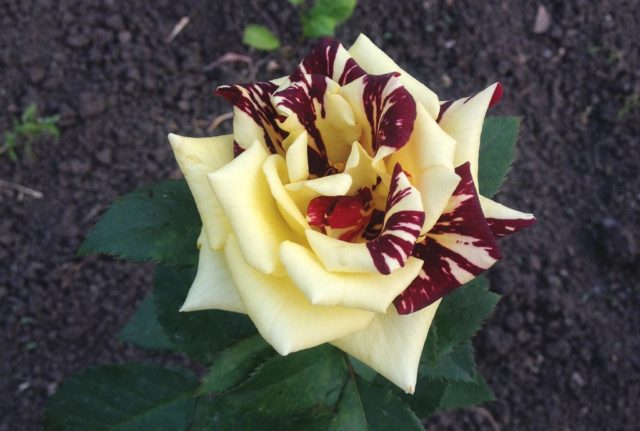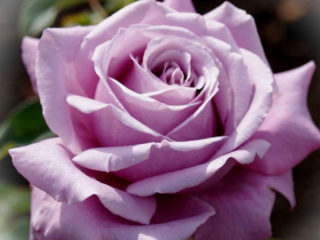Content
Rose Hocus Pocus has its name for a reason, because every flowering is an unexpected surprise. And it is unknown what flowers will bloom: whether they will be dark red buds, yellow ones, or mesmerizing striped ones. The color of the rose is still more contrasting, two-tone, irregular and not blurred, which is what attracts gardeners.

Despite the small size of the buds, the Focus Pocus rose pleases with its productivity and duration of flowering
History of selection
No matter what fascinating effects nature creates, the Hocus Pocus rose was born thanks to human hands. This unusual masterpiece was first presented in 2000 by German breeders of the company W. Kordes&sons, which has considerable fame in Russia. On the world flower market, the variety is known under the name Hocus Pocus Kordans with a unique letter code - KORpocus.
Initially, the variety was intended as a cut variety. But branching and short peduncles make this procedure difficult, so the rose is more used to decorate the landscape and for growing in rose gardens and parks.
The BlackBeauty variety, previously presented by Cordes, took part in the creation of the Focus Pocus rose.
Description of the rose variety Focus Pocus and characteristics
It is quite difficult today to accurately determine whether the Focus Pocus rose belongs to the hybrid tea varieties or to the floribundas. The opinions of rose growers constantly differ, since the flower has a pleasant, delicate aroma inherent in tea hybrids and at the same time blooms for a long time, in waves, which is one of the distinctive features of floribundas.
The plant itself is small in size. The rose bush reaches no more than 50-60 cm in height; occasionally, with good care and growing in partial shade, it can stop at around 80 cm. It is distinguished by its branching and abundant green mass, but the plant is compact, only 40 cm in diameter. The leaves are dark in color. , with a glossy surface, large, odd-pinnate, located on erect, strong shoots. There are practically no thorns.
Usually one bud is formed on the stem, but small inflorescences of 3-5 flowers can also be seen. At the same time, up to 15 roses can bloom on a bush, the diameter of which is 6-8 cm. The number of double petals varies from 30 to 40 pieces, which fit tightly to each other and bend strongly outward towards the edge, forming sharp corners.
The rose blooms for a long time, although it is wavy; the bush pleases with beautiful buds almost throughout the entire season, from the end of May to September-October. That is why many gardeners classify the Hocus Pocus rose in the floribunda group.The flowers themselves stay on the bushes for up to two weeks without falling off, but if there are signs of wilting, it is better to cut off the buds immediately so that the plant does not waste energy on them.
Advantages and disadvantages of the variety
The Focus Pocus rose is gaining popularity among gardeners not only due to its unusual color, but also because of its other positive qualities.

All flowers of the Focus Pocus variety have their own individual color, and it is impossible to find identical roses
Pros:
- after planting, flowering can be expected in the second year;
- the rose is resistant to frost and can easily tolerate temperatures below - 20-23 ℃ without shelter (USDA frost resistance zone - 6);
- has good immunity to powdery mildew, and with proper care is little susceptible to other diseases;
- unusual color of buds;
- flowers on the bush last up to two weeks without shedding, just like when cut;
- long flowering period (very short rest periods, thanks to which the rose seems to bloom continuously throughout the season).
Minuses:
- low immunity to black spot;
- bushes most often suffer from aphid attacks;
- does not tolerate wet weather well; during the rainy season the buds may not open;
- in heat and drought, flowers are susceptible to fading and rapid withering;
- easy to care for.
Reproduction methods
Since the Focus Pocus rose is a hybrid, propagation is carried out exclusively by vegetative methods to preserve all varietal characteristics. The most common method is to divide the bush. Only healthy and sufficiently mature plants are suitable for the procedure, which are dug up between late April and mid-May. The division itself is carried out using sharp pruning shears, pre-treated with a disinfectant solution.Divide the root system into 2-3 parts, while removing rotten and weak roots. The cutting areas must be processed and the separated parts are dipped into a pre-prepared mixture of clay and manure. Afterwards, the plants are planted in a permanent place.
You can also propagate the Hocus Pocus rose by layering. The procedure is also carried out in the spring. To do this, choose flexible biennial shoots that are bent to the ground. At the point where the branch comes into contact with the soil, an incision is made on it, then fixed with special staples or wooden pegs, and sprinkled with soil on top. To make rooting faster, the location for layering should be prepared in advance. For this purpose, peat or rotted manure is added to the soil. Fully rooted cuttings are separated from the mother bush only the next year, followed by transplantation to a permanent place.
Growing and care
Rose Focus Pocus is a whimsical plant, and its flowering and life expectancy depend on proper planting, as well as subsequent care.
When choosing a location, be sure to take into account that the variety requires fertile and loose soil. The site should be located on a hill, be well lit and without draft winds. At the same time, at noon the bush should be in partial shade so that the bright rays of the sun do not cause the buds to wither and burn out.
The first three weeks after planting play the most important role for the rose.It is at this time that the plant experiences the greatest stress and requires a lot of attention, which consists of proper watering, fertilizing and loosening the soil.
The soil should be moistened moderately so that the water does not stagnate, while a lack of moisture can also have a detrimental effect on the bush. The best watering option is once every 6-7 days. It is produced strictly at the root with warm, settled water in the evening or morning.

After watering, be sure to loosen the soil, this improves the air and moisture permeability of the soil.
To strengthen it in the first year after planting and to ensure subsequent abundant flowering, the Focus Pocus rose is fed. Fertilizers should be applied at least four times per season:
- the first fertilizing after the snow melted at the end of March using nitrogen-containing complexes;
- second - during the period of growth of green mass, fertilizers containing nitrogen are also used;
- third - during the period of budding (flowering), in this case the plant needs potassium and phosphorus;
- The last feeding is carried out at the end of summer to prepare the bush for winter.
Roses are pruned at least twice:
- in the spring, removing damaged and frozen shoots;
- in the fall, cutting off all faded buds.
Also, during the period between flowerings, faded roses should be removed.
Pests and diseases
If you choose the wrong site for planting a Focus Pocus rose, for example, in a lowland or near groundwater, this can cause root rot. This is one of the main diseases that seriously threatens the bush.
Also dangerous is black spot, to which the rose of this variety has weak immunity.To prevent the onset of the disease, it is recommended to carry out preventive treatment in the spring before the buds swell and when the leaves bloom. If the disease is nevertheless detected on the bush, then the damaged shoots, leaves and buds are immediately removed and then burned. And the plant itself is treated with systemic or systemic-contact fungicides.
As for insects, the greatest threat is posed by aphids, and, consequently, garden ants. When pests appear, it is recommended to use folk remedies if the colony of parasites is small, or insecticides if there is massive damage.
Application in landscape design
The small peduncles of the Focus Pocus variety and the location of the buds on the sides complicate the process of creating beautiful bouquets. Therefore, roses are often used to decorate the landscape.
The compactness and small size of Focus Pocus bushes makes the variety ideal for edging paths. The beautiful and unusual color of the buds allows you to use the rose as a bright accent in a flower bed among field and herbaceous plants.

A low shrub is planted in the foreground of a voluminous flower garden
But the non-standard and changeable color of the flowers still makes it inconvenient to select neighbors for the rose, so in most cases it is used in mono-plantings.
Conclusion
Rose Hocus Pocus is quite whimsical and difficult to grow; it requires a lot of attention and effort. But if you follow agrotechnical rules, all the time spent will be more than justified. Beautiful and numerous buds will delight their owner throughout the summer. And the blooming of each flower will be a real surprise for him.








